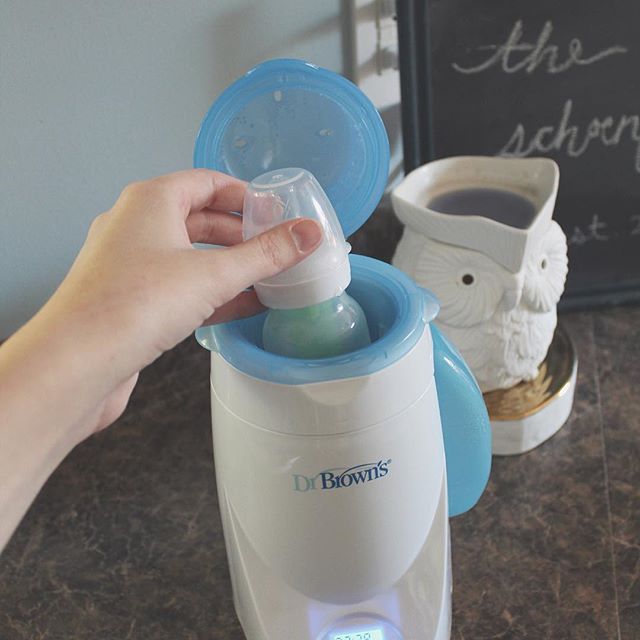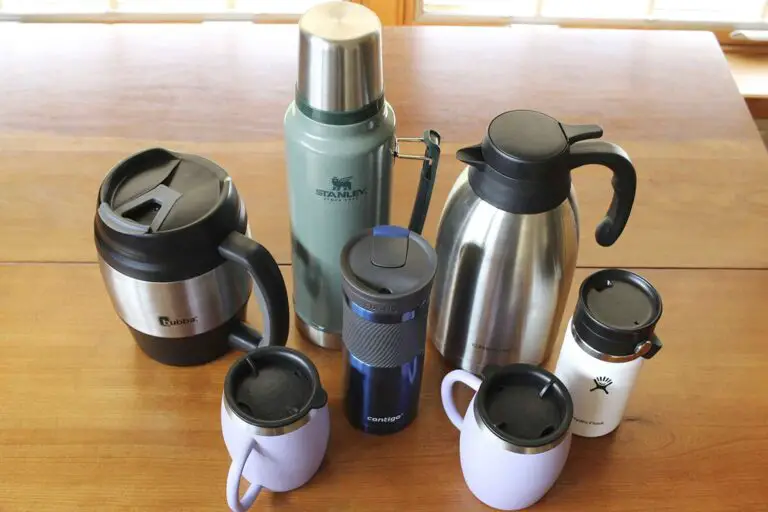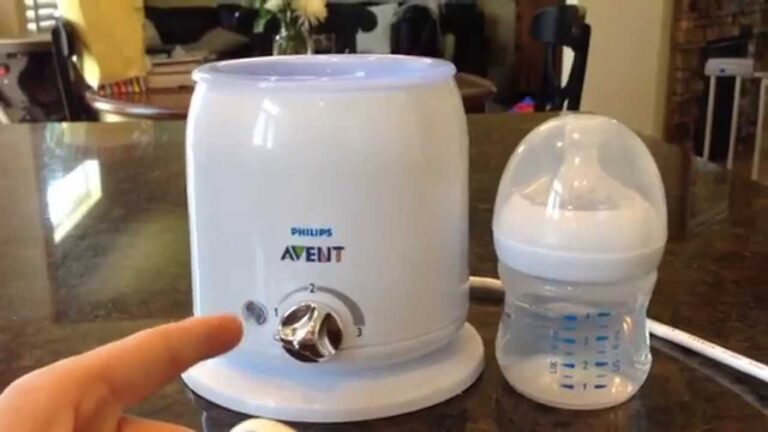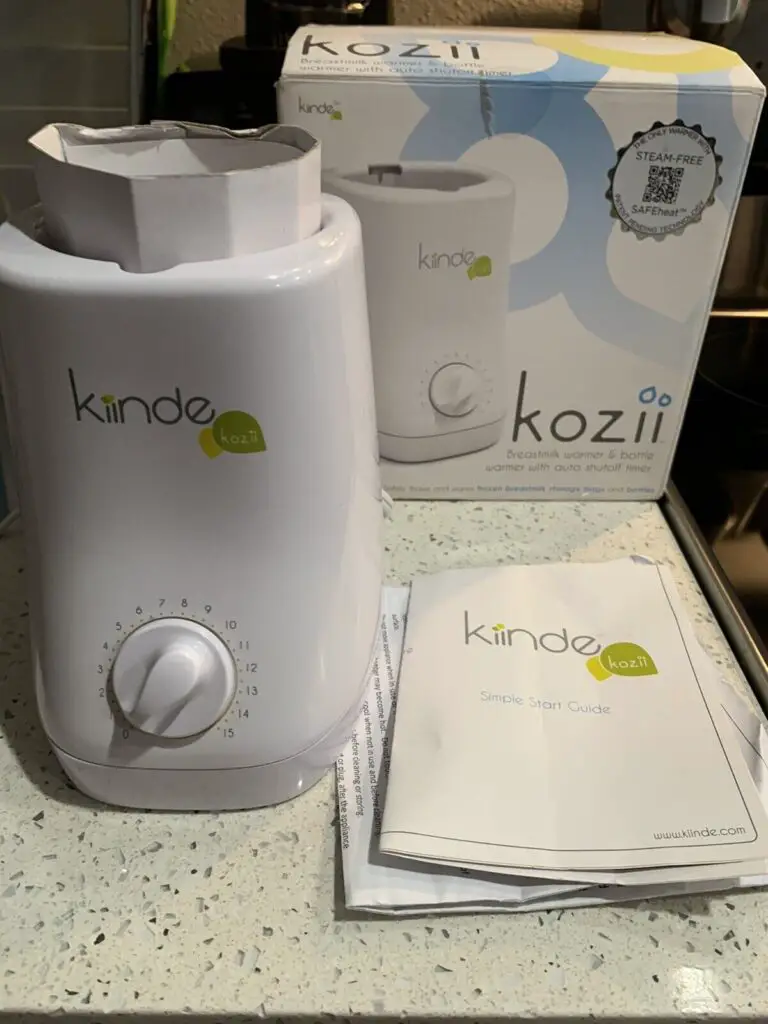Why Warm Silicone Bottles?
When it comes to feeding your baby, using silicone bottles can offer numerous benefits. However, it’s important to know how to properly warm these bottles to ensure your baby’s comfort and safety.
Benefits of warming silicone bottles for feeding babies
- Temperature regulation: Warming the silicone bottle can help regulate the temperature of the milk or formula, making it more enjoyable for your baby. This is especially important for newborns or infants who are used to consuming warm breast milk.
- Easier digestion: Warming the bottle can aid in easier digestion for your baby. The warmth helps break down the milk or formula, making it gentler on their digestive system.
- Mimics breastfeeding: If you are transitioning from breastfeeding to bottle-feeding, warming the silicone bottle can help create a more familiar experience for your baby. The warmth resembles the temperature of breast milk, helping them feel more comfortable and secure.
- Promotes relaxation: The soothing warmth of the bottle can calm and relax your baby during feeding time, creating a comforting and bonding experience for both of you.
- Minimizes nipple confusion: Some babies may experience nipple confusion when transitioning from breastfeeding to bottle-feeding. Warming the silicone bottle can make the transition smoother and reduce nipple confusion by providing a more consistent experience.
Overall, taking the time to warm silicone bottles for feeding your baby can offer a range of benefits, ensuring a pleasant and nurturing feeding experience. Remember to follow the manufacturer’s guidelines for heating and testing the temperature before giving it to your little one.
Methods of Warming Silicone Bottles
Different ways to warm silicone bottles safely and efficiently
Warming baby bottles is a crucial task for every parent or caregiver. Warm milk can help soothe a baby’s tummy and make feeding more enjoyable. When it comes to warming silicone bottles, there are several safe and efficient methods you can choose from. Here are some popular options:
1. Warm Water Bath: This method involves filling a container with warm water and placing the silicone bottle inside. Allow the bottle to sit in the warm water for a few minutes until the milk reaches the desired temperature. Be sure to test it on your wrist before feeding.
2. Bottle Warmer: Investing in a bottle warmer can make the process quick and easy. These devices are specifically designed to heat bottles evenly and eliminate hotspots. Follow the manufacturer’s instructions for proper usage.
3. Running Water: If you’re short on time, holding the silicone bottle under warm running water can be a convenient option. Make sure to rotate the bottle to ensure even heating.
4. Electric Bottle Sterilizer with Warming Function: Some electric bottle sterilizers come with a warming function. These multipurpose devices can sterilize bottles and warm them up simultaneously, saving you time and effort.
It’s essential to avoid using a microwave to warm silicone bottles as it can heat unevenly, creating hotspots that can scald your baby’s mouth.
Remember, always check the temperature of the milk before feeding your baby to prevent any burns or discomfort. Investing in a good quality bottle warmer or utilizing other safe methods will ensure that your baby’s mealtime is both enjoyable and safe!
| Method | Pros | Cons |
|---|---|---|
| Warm Water Bath | Inexpensive method, allows for even heating | Takes longer than other methods |
| Bottle Warmer | Quick and easy, ensures even heating | Requires additional equipment |
| Running Water | Convenient and accessible method | Difficult to gauge exact temperature |
| Electric Sterilizer | Multi-purpose device, saves time and effort | More expensive than other options |
| Microwave | Quick, but not recommended for silicone bottles due to uneven heating and risk of hotspots | Heating can be uneven, risks scalding the baby and damaging the silicone bottle surface |
Using Warm Water Bath
Step-by-step guide on warming silicone bottles using warm water bath
- Fill a pot with enough water to cover the silicone bottle.
- Heat the water on the stove over medium heat until it reaches a warm, but not boiling, temperature.
- Carefully place the silicone bottle into the pot of warm water, ensuring it is fully submerged.
- Leave the bottle in the water for a few minutes, allowing the warmth to transfer to the liquid inside.
- Gently swirl or shake the bottle to evenly distribute the warmth throughout.
- Test the temperature of the liquid by placing a few drops on your wrist to ensure it is not too hot for your baby.
- Once the liquid reaches a safe and comfortable temperature, remove the silicone bottle from the pot of water.
- Dry off any excess water from the outside of the bottle before using.
Using warm water bath is a gentle and effective way to warm silicone bottles without sacrificing any nutrients or causing hot spots that may burn your baby’s mouth. It is important to always follow safe warming practices and test the temperature of the liquid before feeding your baby.
Remember, warming silicone bottles using warm water bath is just one method and there are other options available such as bottle warmers or running under warm tap water. Choose a method that works best for you and your baby’s needs.
Using Bottle Warmers
Advantages of using bottle warmers and how to use them with silicone bottles
When it comes to feeding your baby, using a bottle warmer can be a game-changer. Not only does it make the process easier and more convenient, but it also helps ensure that your baby’s milk or formula is at the perfect temperature for consumption. If you’re using silicone bottles for feeding, here are some advantages of using bottle warmers and how to use them effectively:
Advantages:
- Even Heating: Bottle warmers provide a consistent and even heat distribution, which is important for warming silicone bottles. Silicone can withstand high temperatures without warping or melting, making it safe to use with bottle warmers.
- Quick and Efficient: Bottle warmers are designed to heat up bottles quickly, helping you save time in feeding your baby. This is especially useful for busy parents who need to warm multiple bottles throughout the day.
- Precise Temperature Control: Many bottle warmers come with temperature control settings, allowing you to adjust the heat according to your preference. This ensures that the milk or formula in your silicone bottles is warmed to the ideal temperature for your baby.
How to Use:
- Read the Instructions: Each bottle warmer may have its own specific instructions, so it’s important to read and follow them carefully.
- Add Water: Most bottle warmers require you to add water to the warming chamber. Follow the recommended amount as indicated in the instructions.
- Place the Bottle: Put your silicone bottle in the warming chamber or basket provided by the bottle warmer.
- Select Temperature: Set the desired temperature on the bottle warmer, usually indicated by a control dial or digital display.
- Start the Warmer: Activate the bottle warmer according to the instructions, and it will begin heating your silicone bottle.
- Test the Temperature: Before feeding your baby, ensure that the liquid inside the bottle has reached a comfortable temperature. You can do this by testing a small amount on the inside of your wrist or using a bottle thermometer.
By utilizing a bottle warmer correctly with your silicone bottles, you can provide your baby with warm and comforting meals while ensuring their safety and well-being.
Microwave Heating
When it comes to warming silicone bottles, one of the quickest and most convenient methods is using the microwave. Here are some guidelines to ensure safe and effective heating:
Precautions and guidelines for safely warming silicone bottles in the microwave
- Use microwave-safe bottles: Before attempting to warm your silicone bottle in the microwave, make sure it is labeled as microwave-safe. This ensures that the bottle can withstand the heat without warping or leaching any harmful chemicals into the liquid.
- Remove the cap and nipple: Before placing the bottle in the microwave, remove the cap and nipple to prevent any pressure build-up or potential damage to these parts.
- Heat in short intervals: To avoid overheating, heat the silicone bottle in short intervals of about 20-30 seconds at a time. This allows you to check and adjust the temperature as needed.
- Stir or shake: After each heating interval, stir or shake the bottle gently to distribute the heat evenly and ensure there are no hot spots.
- Test the temperature: Before feeding your baby, always test the temperature of the liquid by placing a few drops on your wrist or the back of your hand. It should feel warm, not hot.
- Be cautious with formula: If you are warming a silicone bottle with formula, be extra cautious not to overheat it as excessive heat can destroy beneficial nutrients.
Remember to follow these guidelines carefully and consult the manufacturer’s instructions for your specific silicone bottle model. By doing so, you can safely warm your silicone bottles in the microwave and provide your little one with a comfortable and hygienic feeding experience.
Sources:
- “Branding.” Wikipedia, Wikimedia Foundation, 29 Sept. 2021, https://en.wikipedia.org/wiki/Branding.
- “Buyer decision process.” Wikipedia, Wikimedia Foundation, 5 Sept. 2021, https://en.wikipedia.org/wiki/Buyer_decision_process.
- “Entrepreneurship.” Wikipedia, Wikimedia Foundation, 19 Oct. 2021, https://en.wikipedia.org/wiki/Entrepreneurship.
| Advantages of branding your business | Precautions for warming silicone bottles in the microwave |
|---|---|
| Distinguish your business from competitors | Use microwave-safe bottles |
| Become more recognizable | Remove the cap and nipple before heating |
| Heat in short intervals | |
| Stir or shake after each heating interval | |
| Test the temperature before feeding | |
| Be cautious with formula |
Portable and On-the-go Solutions
If you are a parent who feeds your baby with silicone bottles, you may be wondering how to warm them when you’re away from home. Thankfully, there are several portable and on-the-go solutions available to make feeding time easier for you and your little one.
Tips for warming silicone bottles when traveling or on-the-go
- Use a bottle warmer: Invest in a portable bottle warmer specifically designed for travel. These devices are compact and efficient, allowing you to warm your silicone bottles quickly and safely while on the move.
- Use hot water: If you don’t have access to a bottle warmer, you can use hot water to warm your silicone bottles. Fill a thermos with boiling water and place the bottle in it for a few minutes until it reaches the desired temperature. Remember to always test the temperature on your wrist before feeding your baby.
- Use a car bottle warmer: For longer journeys, consider using a car bottle warmer that can be plugged into your car’s cigarette lighter socket. These devices heat up the milk gently while you’re on the road, ensuring your baby can enjoy a warm meal even during extended travel times.
- Pre-fill bottles with warm water: If you know you’ll be out for an extended period, pre-fill your silicone bottles with warm water from home. This will make it easier and quicker to prepare formula or breast milk when your baby needs to eat.
Remember to always follow the manufacturer’s instructions when warming silicone bottles, as different brands may have specific guidelines. And most importantly, prioritize your baby’s safety and comfort by testing the temperature of the milk before feeding them.
Timing and Temperature Considerations
When it comes to warming silicone baby bottles, it’s essential to consider proper timing and temperature. Babies have sensitive palates, and giving them the right temperature can ensure their comfort and safety.
Importance of proper temperature and timing when warming silicone bottles
Baby’s Comfort: Warming a silicone bottle ensures that your baby’s milk or formula is at a temperature that mimics breast milk. This prevents discomfort caused by consuming cold or hot liquids and helps babies transition more easily between breast and bottle feeding.
Safety: Proper temperature is crucial for your baby’s safety. Heating the bottle at the right temperature prevents burns or scalds on your little one’s delicate mouth. It’s important to note that overheating the bottle can also cause nutrients in the milk or formula to break down, leading to reduced nutritional value.
Easier Digestion: Warming a silicone bottle can aid digestion for babies. Warm liquids are easier for their tiny tummies to process, reducing the chances of gas or colic.
Consistency: Maintaining consistent temperature and timing when warming silicone bottles helps establish a routine for you and your baby. This predictability can be comforting for both of you, providing a stable feeding experience.
To warm a silicone bottle properly, consider using a bottle warmer or placing it in warm water for several minutes. It’s important to test the temperature of the liquid on your wrist or forearm before feeding to ensure it’s not too hot.
In summary, understanding the importance of proper timing and temperature when warming silicone bottles can contribute to your baby’s comfort, safety, digestion, and overall feeding experience.
Caring for Silicone Bottles
Silicone bottles have become a popular choice for feeding infants due to their durability and flexibility. However, it’s important to properly care for these bottles to ensure their longevity and maintain hygiene standards. Here are a few key tips on how to warm and care for silicone bottles:
Proper cleaning and maintenance of silicone bottles after warming
- Cleaning: After warming the bottle, always clean it thoroughly with warm soapy water. This will help remove any milk residue or bacteria that may have accumulated during feeding.
- Disassembly: If your silicone bottle has removable parts, such as the nipple or collar, make sure to take them apart before cleaning. This allows for a more thorough and effective cleaning process.
- Sterilization: To ensure proper hygiene, it is recommended to sterilize silicone bottles periodically. You can use methods like boiling in water or using a steam sterilizer. Follow the manufacturer’s instructions for the best results.
- Drying: After cleaning and sterilizing, allow the bottle and its components to air dry completely before reassembling them. Placing them on a clean towel or rack is ideal to prevent any moisture buildup that could promote bacterial growth.
- Storage: Store your silicone bottles in a clean and dry place. Avoid storing them while they are still wet, as this can lead to mold growth. Keeping them in a designated area away from potential contaminants will also help maintain their cleanliness.
- Regular Inspections: Periodically check for any signs of wear or damage on the silicone bottle. This includes looking out for tears, cracks, or discoloration. If you notice any of these issues, it’s best to replace the bottle to ensure your baby’s safety.
By following these simple care tips, you can extend the life of your silicone bottles and keep them safe for your little one’s use. Remember, proper cleaning and maintenance are essential for maintaining hygiene and preventing bacterial contamination.
Conclusion
Warming silicone bottles for baby feeding is an important step to ensure your baby’s comfort and safety. There are several methods you can choose from, including using a bottle warmer, warm water bath, or a microwave. Keep in mind the safety precautions and guidelines to prevent overheating or damaging the bottle.
Summary of different methods and tips for safely and effectively warming silicone bottles for baby feeding
- Bottle warmer: This method provides a convenient and efficient way to warm silicone bottles. Follow the manufacturer’s instructions and adjust the warming time based on the desired temperature.
- Warm water bath: Place the silicone bottle in a bowl or basin of warm water for a few minutes, ensuring that the water level does not exceed the bottle’s neck. Test the temperature before feeding your baby.
- Microwave: Only use this method if your silicone bottle is microwave-safe. Remove any metal parts, such as bottle rings or lids, and heat in short intervals to avoid uneven heating. Shake the bottle well and test the temperature before giving it to your baby.
Remember to always test the temperature of the milk or formula on your wrist before feeding your baby. It should be comfortably warm, not hot. Avoid using boiling water or heating methods that can damage the silicone material.
FAQ (Frequently Asked Questions)
Q: Can I warm a silicone bottle directly on the stove?
A: No, it is not recommended to heat a silicone bottle directly on the stove as it may melt or deform the bottle.
Q: How long should I warm a silicone bottle in a bottle warmer?
A: The warming time may vary depending on the brand and desired temperature. Refer to the manufacturer’s instructions for specific guidance.
Q: Can I warm a silicone bottle in the microwave with milk or formula inside?
A: It is not recommended to heat milk or formula in a microwave as it can cause uneven heating and hot spots. Warm the silicone bottle first and then add the milk or formula.
Q: Can I warm a cold silicone bottle in hot water?
A: It is safe to warm a cold silicone bottle in warm water using the warm water bath method. Ensure that the water is not too hot and test the temperature before feeding your baby.




